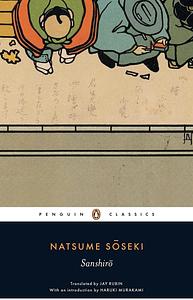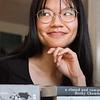Take a photo of a barcode or cover
3.5/5 stars, rounded down
I read this book in college for a Japanese Literature course, and I remember really liking the first fifty pages. So, when I found it cheap in a used bookstore, I decided to revisit it. While I like the style and the multiple characters that flicker in-and-out of Sanshiro's otherwise mundane life, this book really is a hefty dose of "back-in-the-day" casual sexism. There are some passages where it's very clear almost none of the men take the women seriously. Sanshiro's love interest, in particular, is treated with such cheerful disdain at multiple points in the book, that it only seems the men even humor her because of who her brother is. There are also multiple points where Sanshiro's mother and other women are dismissed or disregarded as insignificant to the lives and interests of the men (and the exceptionally strong message that marrying a woman limits a man's success and mind). While I know this book is about the modernization of Japan and that Mineko and Yoshiko, the other major female character, are outside of the typical Japanese norm at that time, there's still the undercurrent that they're acting against the wishes and desires of the men in their lives. I did really like the subtle melancholic ending and certain callbacks, however, so that's why I bumped it up half a star.
I read this book in college for a Japanese Literature course, and I remember really liking the first fifty pages. So, when I found it cheap in a used bookstore, I decided to revisit it. While I like the style and the multiple characters that flicker in-and-out of Sanshiro's otherwise mundane life, this book really is a hefty dose of "back-in-the-day" casual sexism. There are some passages where it's very clear almost none of the men take the women seriously. Sanshiro's love interest, in particular, is treated with such cheerful disdain at multiple points in the book, that it only seems the men even humor her because of who her brother is. There are also multiple points where Sanshiro's mother and other women are dismissed or disregarded as insignificant to the lives and interests of the men (and the exceptionally strong message that marrying a woman limits a man's success and mind). While I know this book is about the modernization of Japan and that Mineko and Yoshiko, the other major female character, are outside of the typical Japanese norm at that time, there's still the undercurrent that they're acting against the wishes and desires of the men in their lives. I did really like the subtle melancholic ending and certain callbacks, however, so that's why I bumped it up half a star.
lighthearted
reflective
relaxing
medium-paced
Plot or Character Driven:
A mix
Strong character development:
Complicated
Loveable characters:
No
Diverse cast of characters:
No
Flaws of characters a main focus:
Complicated
Pretty enjoyable and humorous book. Bildungsroman kind of style but with a Jane Austen kind of plot. Set during the Meiji restoration so there's plenty interesting regarding that
Interesting commentary on modernism of Japan with a self-insert character and sexist conclusion
This was a truly wonderful book. The setting, the writing, the atmosphere... one of those books where nothing much happens, but you can picture every scene, the very gestures, voices, and mimicry of the characters... I loved it. Would have been five stars, but though it made me nostalgic for a place and time I can never visit, there was no great depth of emotion: the heart was mildly touched. I am keen to try more Natsume Soseki.
relaxing
medium-paced
Strong character development:
Complicated
Loveable characters:
Yes
Diverse cast of characters:
No
Flaws of characters a main focus:
Yes
Lối văn nhẹ, trầm. Dù viết hơn một thế kỷ trước nhưng lại khá gần gũi với cảnh đại học ngày nay.
Aunque disfruté más Botchan, hay fragmentos de este libro con los que me identifiqué demasiado. Es una buena lectura para quien tenga una relación complicada con la academia, ya que muestra a la perfección las expectativas, desgracias y otras incomodidades que todos conocemos. Me fascina que el periodo Meiji, desde los ojos de Soseki, resulte familiar a pesar de la distancia geográfica y temporal. Mi único problema con el libro es que está demasiado disperso, no hay un conflicto claro que motive el progreso de la historia, las cosas simplemente pasan de tal modo que, aunque creo que todas esas cosas son cualidades que el autor le dio a la novela en función el tema y el estilo que desarrolló, se convierte en una lectura tediosa y aburrida en muchas ocasiones.
This article in the Harvard Journal of Asiatic Studies by the translator (Jay Rubin) has been really helpful in my understanding of the various imagery and symbolism employed by Soseki in the novel:
Sanshirō and Sōseki
Sanshirō and Sōseki






